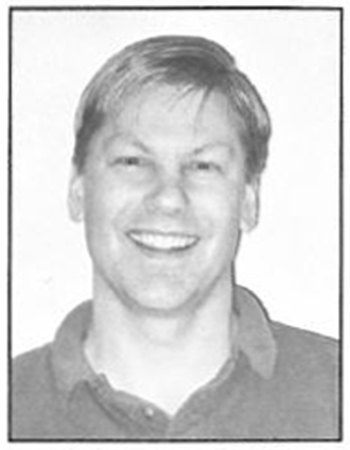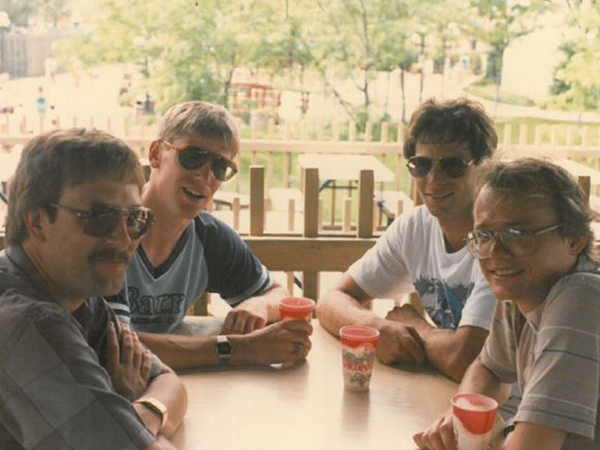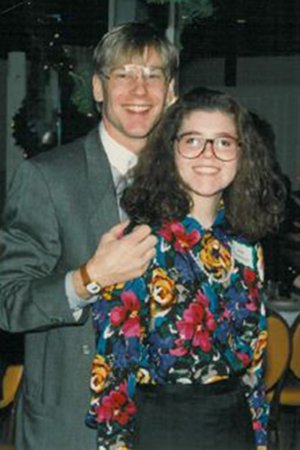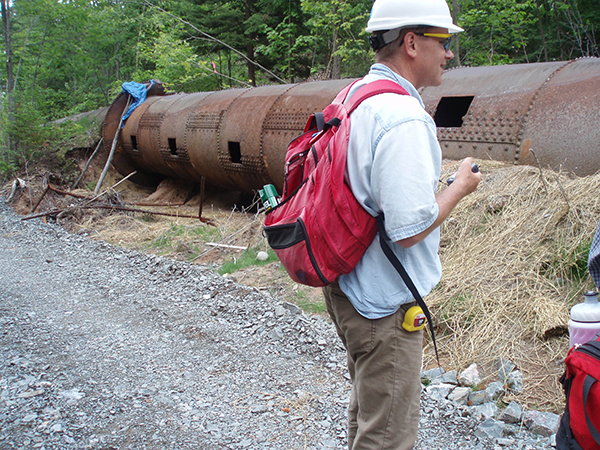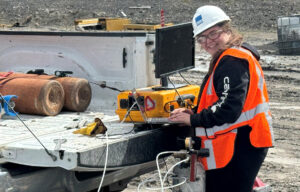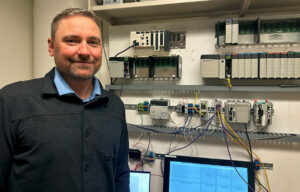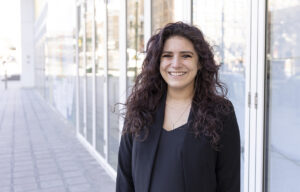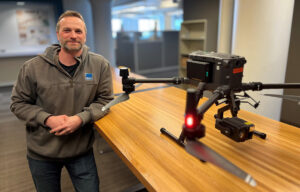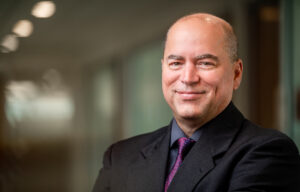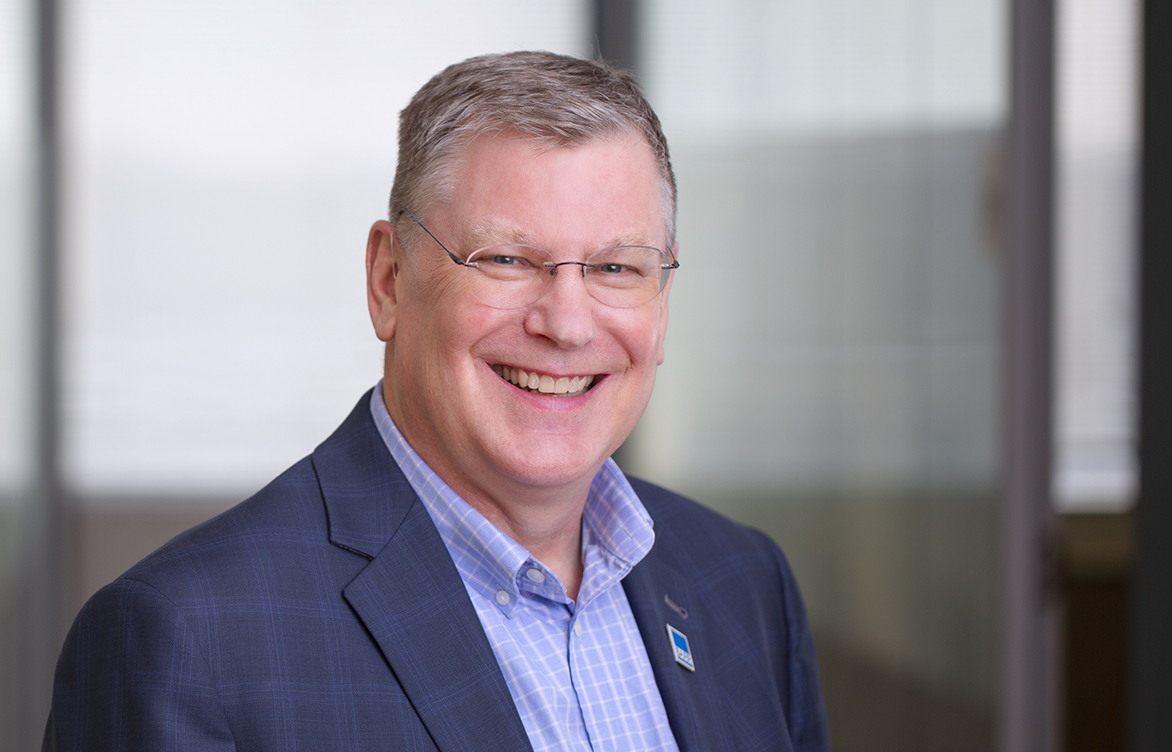
Back when households across the U.S. were spending their evenings watching Bonanza and blaring The Mamas & the Papas from their car radios, Doug Barr was busy founding Barr Engineering Co. Incorporated 58 years ago today, Doug’s employee-owned firm started with just 16 employees. Today, some of those original employees are still at Barr. Others, like Chief Marketing Officer Bill Forsmark, have been around since Barr’s teenage years. Here, we chat with Bill about what it was like working at Barr as a 16-year-old high school student, the growth he (and Barr) have experienced since then, and what has kept him at Barr all these years.
You and Barr have quite the history together. How did your journey at Barr begin?
I was enamored with industrial arts drafting in high school. During my junior year, my drafting teacher got a call from a local engineering company based in Minneapolis, Minnesota. The company was looking for someone to do drafting and odd jobs part-time during the school year and full-time in the summer. Would I be interested? Would I!
I joined Barr in 1980. At the time, we had 63 employees. I was 16 years old; Barr was 14. We were teenagers together.
I joined Barr in 1980. At the time, we had 63 employees. I was 16 years old; Barr was 14. We were teenagers together. My job was pretty rudimentary at first: corrections on drawings, odd jobs around the office, or making deliveries to the local printer. I was “Boy Friday,” if you will.
After high school, I decided to study civil engineering at the University of Minnesota (U of M) so I could continue working part-time at Barr, which helped pay for my education. In the summers, I was often out at construction sites doing observation and materials testing. When I graduated from the U of M in 1986, Barr had grown to about 80 or 90 people.
With an engineering degree now under your belt, you were ready to rise out of your “Boy Friday” role at Barr. What steps did you take to make the transition?
After I graduated, I expressed interest in staying on at Barr as an engineer. But the HR director pointed out: “It’s going to be really hard to change people’s perceptions of you. You’re always going to be ‘little Billy Forsmark’ who does drafting and odd jobs.” I pushed on despite his (very good) advice, even when it meant convincing my new colleagues that my copy-shop-run days were over.
Even in the 1980s and ’90s, newly graduated engineers typically rotated through design, drafting, and field assignments for their first few years to gain practical experience. So even three or four years out of school, I was engaging with clients, building those relationships, and talking to them about what other projects they were working on or anticipating (turns out, this is what we call “marketing”!).
Along the way, opportunities outside of Barr occasionally presented themselves. And while there were a couple of times I seriously thought about going elsewhere to try new things, I always came back to loving the people I work with at Barr and asked myself, “Why can’t I do that at Barr?”
What did you learn early on at Barr that has helped propel you to where you are today?
Over the course of my career, I have pursued a number of internal opportunities where I was not selected. And, while I was of course disappointed, those ended up being really valuable lessons. They provided me with good insight into how Barr’s culture operates. When you only have one position open and several really good candidates, what do you do with the people you didn’t choose? In many other organizations, it’s “up or out.” But here at Barr, those leaders found opportunities to engage me in something that taught me a lot too (also known as “re-recruiting”).
You have to go out and grab the brass ring; someone else isn’t going to do it for you.
There were always people at Barr who were interested in and supportive of my success, but they stopped short of saying, “OK, Bill, here’s your path: do this and then do this.” That’s Barr culture: we talk about being entrepreneurial, but initiative is just as important.
You have to go out and grab the brass ring; someone else isn’t going to do it for you. Our CEO doesn’t say, “There’s the promised land, go get it, and here’s exactly how you’re going to do it.” Instead, we set a vision as a team, get people to buy into it, and look for people to step up and take leadership. One of those opportunities came in the early 2000s when I was elected by shareholders to Barr’s board of directors. Barr had 500 to 600 employees at that time, so to be elected by them was both exciting and humbling.
You’re currently the chief marketing officer (CMO) at Barr—an obvious role shift from your early days here. Why the shift?
What I finally figured out on this winding path is that I love solving tough problems. And that’s why I started to make the shift from being very project- and design-focused to helping clients solve problems, and then, ultimately, to helping Barr and our staff solve problems. I discovered I was just as excited about trying to solve a business or staffing issue as I was about solving a complex multi-discipline engineering problem or a structural design problem.
What I finally figured out on this winding path is that I love solving tough problems.
From 2008 to 2012, several senior leadership opportunities opened up, and my coach encouraged me to pursue them. However, the timing wasn’t right for me, and I didn’t feel prepared to step into one of these roles. While it wasn’t the right time, I knew Barr could help me get there.
In the mid 2000s, Barr began a senior transition grant program (which paved the way for our current company-wide Individual Education Account program). I used this program to take a mini-MBA program at the U of M Carlson School of Management. I also took advantage of Barr’s business leadership cohort, which really opened my eyes to leadership. “What are true leaders? What do they act like? How do they treat others? How do they think strategically?”
And so, several years later in 2013, the CMO position opened up. At that point, I was excited. I was ready. I recognized it would be a big shift from focusing my time on projects and project execution to thinking about all of Barr and really focusing on helping others at Barr be successful.
You and Barr have gone through a lot in your 44 years together. How is Barr different today?
In my time at Barr, we have grown from just 63 employees to over 1,000, and from one office in Minneapolis to 20 throughout the United States and Canada. A lot has changed—myself included!—but the essence of our Barr culture has not. The people who came before me are the people I looked up to because they were, and still are, very selfless in their commitment to helping Barr and our clients while creating exciting opportunities for our staff. Our minimal hierarchy structure helps us get out of our own way in terms of sharing ideas and work; hiring good people and feeding their desire to learn and solve problems is essential to that process.
In my time at Barr, we have grown from just 63 employees to over 1,000, and from one office in Minneapolis to 20 throughout the U.S. and Canada.
We work hard, but we like to play, too. In the ’80s, that looked more like, “Hey, let’s go jump in the boat and spend the afternoon waterskiing and fishing.” Or, we would gather in the staff lunchroom in the afternoon for refreshments. That kind of thing still happens, but in different and various ways.
Today, staff gatherings are more organized and are initiated and run by our employees. We have softball, volleyball, and ultimate frisbee teams; we have Habitat for Humanity crews; we even have a book club. Socializing still happens, but what people do in their free time now is a little bit different. We’re always thinking, “How do we still make this a great place to work? How do we make it challenging and fun? And how do we serve our clients at the same time?”
What’s the future look like for Barr, and you?
It may sound trite, but the future of Barr is our people. Someone recently asked me, “If a brand-new staff member walked in my door and asked me how to thrive here at Barr, what would I tell them?” That’s been on my mind a lot.
Your network and your curiosity will take you far at Barr, because now you’ll start hearing about other interesting and challenging opportunities.
The first thing I’d say: Come to the office, wander down the hallway, and get to know people. Talk to people who are outside of your discipline and your business unit; make connections with new people and staff in other offices. Your network and your curiosity will take you far at Barr, because now you’ll start hearing about other interesting and challenging opportunities. And the only way to take advantage of those opportunities is to ask for a role in a new project or to be involved in the next proposal.
As for me? I love what I’m doing, and I love the people I’m working with. It’s been a long-time mantra of mine that when it gets to the point where I don’t enjoy working with these people or I don’t like what I’m doing for weeks or months on end, I’ll think about retiring or doing something different.
But that hasn’t happened.
Interested in joining the Barr team? Check out our open positions.
About Bill Forsmark
Bill Forsmark is Barr’s CMO and a civil engineer with extensive experience in water resources-related structures, including dam and flood control projects. He has also led permitting efforts for mining- and dam-related projects. Bill’s experience includes working with power companies, mining clients, and federal government agencies. In his role as CMO, he supports Barr’s marketing efforts, including new market and client outreach, client and project strategy, and brand presence growth.
Image gallery (below):
-
Bill had been at Barr 15 years when this photo was taken for the 1995 “People at Barr” directory.
-
Barr engineers Greg Keil, Bill Forsmark, Jim Herbert, and Tim Anderson (left to right) enjoy a picnic lunch at Valleyfair circa 1990. All four are still at Barr today.
-
Bill and his wife Susan attend a 1990s-era Barr holiday party.
-
Bill visits the McClure Dam penstock—a pipeline that carries water from the dam to the powerhouse—in Michigan in 2008. Bill was the principal in charge and engineer of record for this project in the Upper Peninsula of Michigan.

